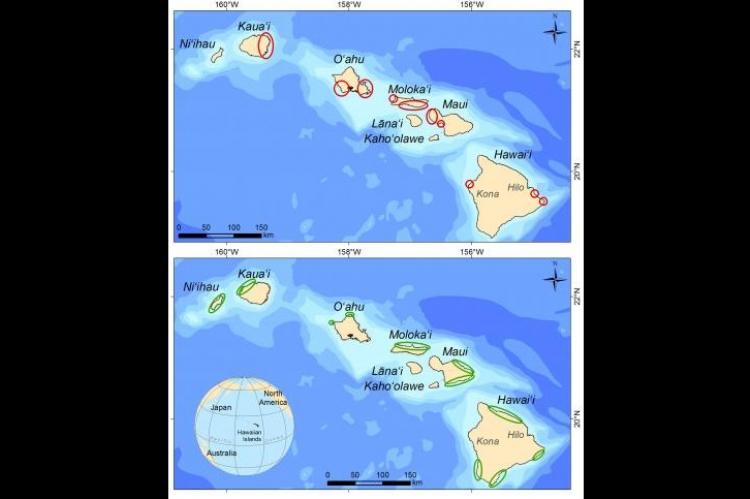Areas of high recovery potential in Hawaii identified
Researchers have identified parts of the Hawaiian Islands that would experience the greatest increase in coastal fishery stocks, provided that they are properly managed.
Researchers have identified areas in the Hawaiian Islands where proper management and conservation efforts would yield the greatest increase in coastal fishery stocks if they are managed effectively.
Led by scientists from the University of Hawaiʻi at Mānoa, the team developed regional seascape models, which integrated fishing patterns and reef fish survey data. They then simulated the removal of fishing pressure within the models. The results showed the areas which had the highest recovery potential for reef fisheries on each island.
According to the press release, "Fish stocks were predicted to increase by more than 500% on average for the identified areas on O'ahu, the most heavily fished island. Areas with the highest recovery potential for coastal fisheries across the island chain were located on east Kaua'i, southeast and southwest O'ahu, south and northwest Moloka'i, Ma'alaea bay and the west shore of west Maui, west Hawai'i Island just north of Makole'a point, and east Hawai'i Island around Cape Kumukahi and north of Kaloli point."
Protecting such areas can allow them to serve as sources of larvae and adults to replenish overfished areas elsewhere.
In addition, areas with habitats that currently supported healthy fish stocks were also identified, such as the northern shore of Moloka'i and the southern shore of Maui. Proper management of such areas would allow them to supplement coastal fisheries into the future.
Generally, areas near rural parts of the northern shores of all islands are not heavily fished and have high quality habitats, supporting abundant stocks of reef fish.
"This new study will help us identify those areas with the greatest potential for increasing reef fish populations on all islands," said Bruce Anderson, Administrator for the Department of Land and Natural Resources Division of Aquatic Resources.
"This scientific information will be compared with an ongoing spatial analysis as part of the Marine 30x30 Initiative. Ultimately our intention is to combine this information with local knowledge and collaboratively identify what to do in management focus areas."


